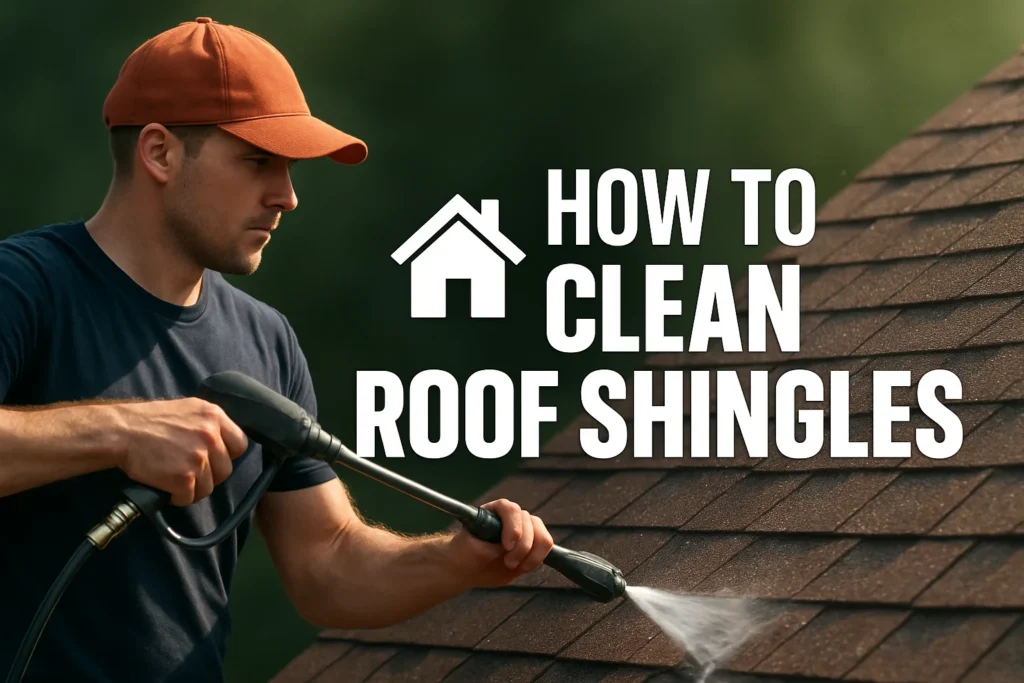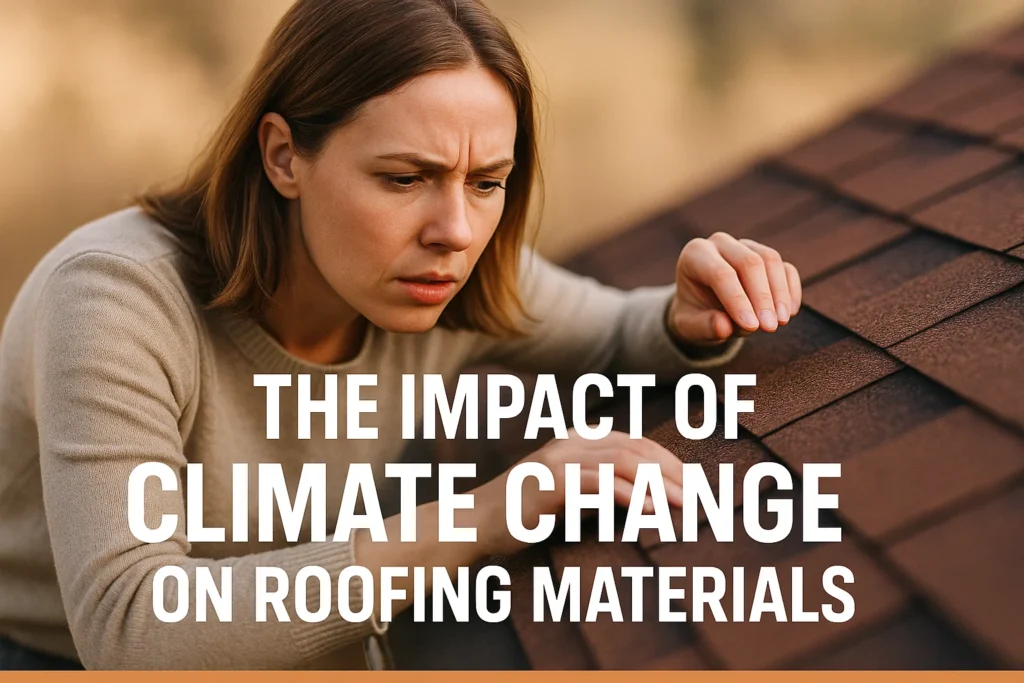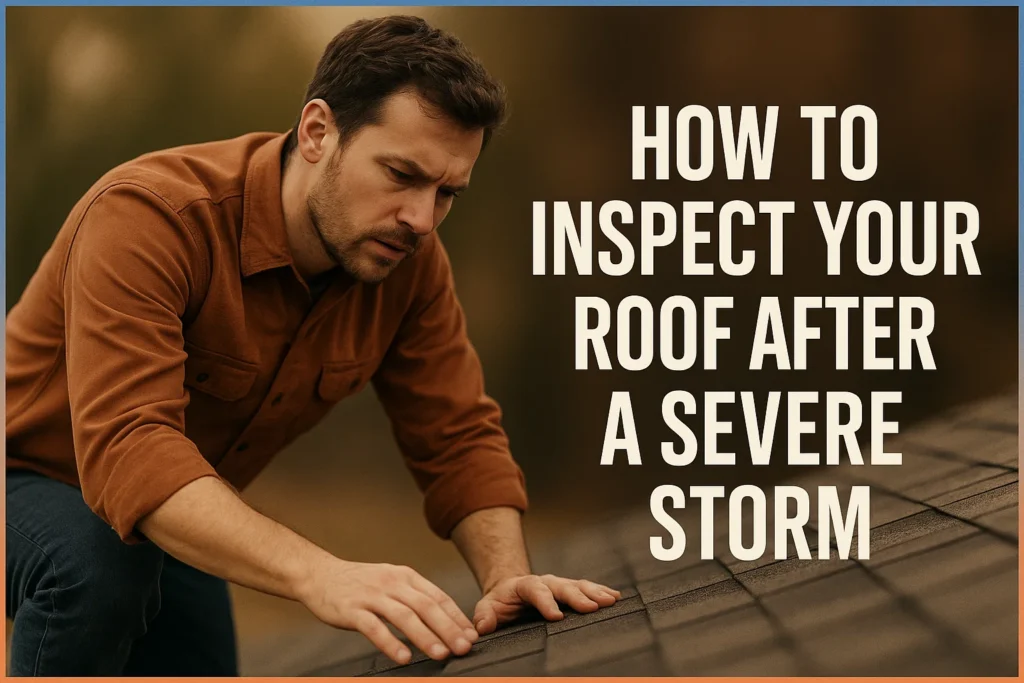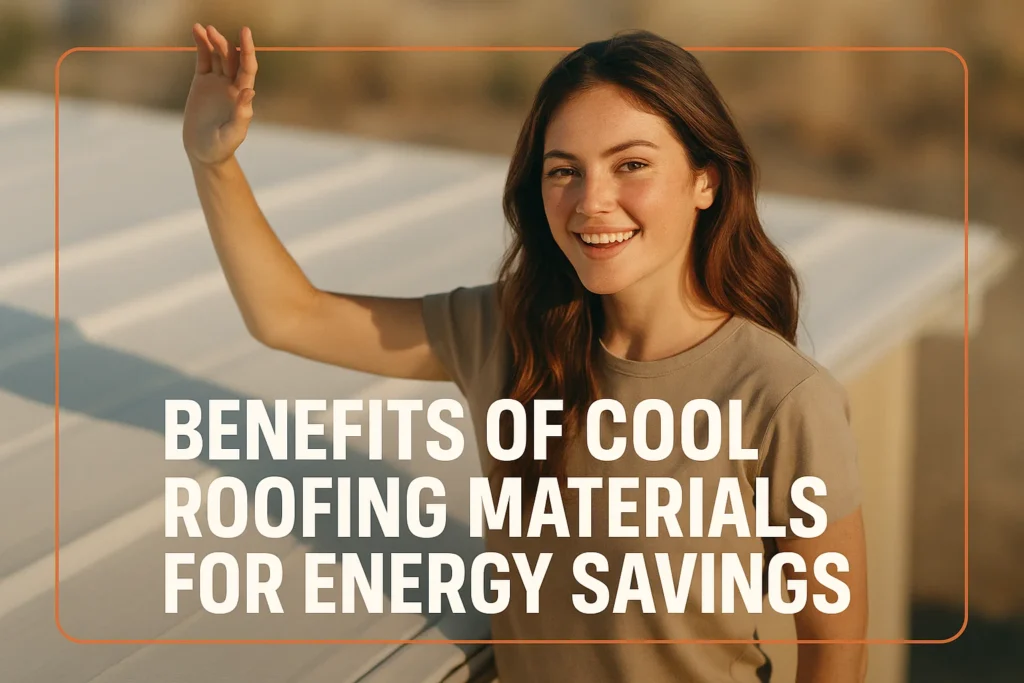The roof shingles form one of the most crucial elements of your outside property. They protect your home against the elements and even play a part in insulation as well as decoration but over the years they become covered with dirt and debris and even moss, algae and mold. When unattended, these factors no longer merely mar the appearance of your roof but may also reduce its service life and lead to expensive repairs. This is why every homeowner has to know how to clean roof shingles. Shingle roof cleaning is a detailed process. In this guide, we are going to guide you completely from explaining what tools to use, solutions to follow, and what mistakes to avoid, as they can easily result in damage.
How to Clean Roof Shingles Safely and Effectively
Roof shingle cleaning is not just another cosmetic job, it is an important home maintenance exercise. With time, shingles may collect dirt, moss, algae and debris which not only reduces the look of your home, but can also influence the durability and efficiency of your roof. Buildup may be ignored, but it may result in premature wear and tear, water damage, and structural problems.
Why Roof Shingles Cleaning Matters
Regular shingles cleaning will ensure your roof is free of algae, moss, and mould that may accumulate and retain moisture resulting in compromising the structural integrity of your roof. Not only does a clean roof enhance curb appeal it can also prevent long term repair on your roof as well as maintain its energy efficiency due to reflected heat.
Best Time of Year for Cleaning Roof Shingles
The scheduling of a roof clean is important. The most suitable period is a mild and dry weather, normally in spring or fall,when the weather is not very hot and the chances of rain are minimal. This set of circumstances enables the cleaning agents to perform appropriately and rinse clean without baking into the shingles or being washed away before their purpose is fulfilled.
Signs Your Roof Needs Cleaning
To start with, it is worth noting that it is time to clean your roof shingles in case of the following signs:
- Dark streaks or stains
- Visible moss or algae
- Debris build-up in roof valleys
- Clogged gutters with granules
- Water stains under the eaves or ceiling leaks
Tools and Materials You’ll Need
To clean your roof, you need to have the appropriate equipment in order not to break the shingles. The bare list would include:
- Protective eyewear and gloves
- Garden hose with spray nozzle
- Soft-bristled brush or broom
- Safety harness and non-slip shoes
- Biodegradable roof cleaning solution
- Ladder with stabilizer
- Buckets and rags
How to Clean a Shingle Roof Without Causing Damage
It is not a mere recommendation to clean the shingle roof, as it also contributes to the maintenance of the roof structure and its performance. But when the wrong method of cleaning is used, it may be worse than not cleaning at all. Excessive pressure or the use of improper chemicals may cause damage to the shingles, reduce the life of the roof, and result in expensive repair work.
However, the secret of safe, effective cleaning is knowing the correct procedure. Whether you want to know what the best solutions are or how to compare the cleaning methods, such as soft washing and pressure washing, this section will provide you with practical steps to take care of your roof and give it a new look.
Step-by-Step Instructions for Cleaning Roof Shingles
1. Choose a Safe Day
Choose a cloudy day that is not very warm. Cleaners may evaporate too fast in direct sunlight and become less effective.
2. Prepare the Area
Wrap plastic sheets around cover plants and outdoor furniture. Ensure that gutters are clean to capture runoff.
3. Mix Your Cleaning Solution
Apply a solution of half water and half bleach or a roof cleaner commercially available, a biodegradable cleaner.
4. Apply the Solution
Apply the solution on the affected areas using a pump sprayer to cover the areas uniformly. Begin at the lowest level and go up.
5. Let It Sit
Let the solution rest between 15-20 minutes to allow the solution to dissolve stains and organic growth.
6. Gently Rinse
With your hose on a low-pressure setting, rain the roof downwards. Be sure not to spray upwards, as this can lift shingles.
7. Spot-Treat Stubborn Areas
To remove stubborn growths or stains, scrub lightly with a soft brush and rinse thoroughly twice.
What Cleaning Solutions Are Safe for Asphalt Shingles?
Asphalt shingles consist of a fiberglass or organic base that is covered with asphalt and granules. Strong chemicals or unreasonable force may make the asphalt weak and lose its protective granules, and damage the waterproof layer.
• 50/50 Combination of Water and Bleach (Sodium Hypochlorite):
This dilute solution is effective in killing biological growths such as algae and mold without deteriorating the asphalt or granules, provided it is well diluted and thoroughly rinsed.
• Environmentally-Safe Roof Cleaners:
They are formulated to be non-corrosive and biodegradable, and thus they are not harsh to roofing materials and also are not harmful to the environment, particularly when the runoff finds its way to your landscaping.
• Store-Bought Cleaners that are non-corrosive:
Specifically manufactured products used in roof shingles are subject to tests that guarantee their compatibility with asphalt products. They’re usually pH-balanced, and they’re solvent- or acid-free.
Avoid:
- Undiluted bleach
- Ammonia-based cleaners
- Abrasive detergents
- Acidic or solvent-based chemicals
Soft Wash vs. Pressure Wash: What’s Better for Your Roof?
Selecting an appropriate washing technique is imperative in extending the life of your shingles.
Soft Wash
o Utilizes low-pressure water (less than 500 PSI) and cleaning chemicals
o Safe for Asphalt shingles
o Delegates algae, moss, and stain elimination efficiently without damaging the surface
o Most roofing manufacturers recommend it
Power Wash
o Employs high-pressure water (greater than 1,000 PSI)
o Can remove granules from shingles and reduce the life span of roofs
o Should not be used on asphalt shingle roofs except in very mild and limited ways.
Verdict: Whenever cleaning asphalt shingles, always use soft washing. It is safer, less intrusive, and more conducive to the durability of roofs.
Common Mistakes in Roof Shingles Cleaning
The idea of cleaning your roof shingles might be simple enough, but many people fall into the common traps of causing more damage than good. No matter how minor they might seem, whether through incorrect methods or neglect of certain essential matters, such errors can and will diminish the life of your roof, cause you to spend hundreds or even thousands of dollars in repairs, or even allow your warranty to become nullified. It is also crucial to know what to avoid doing in the process of cleaning as much as it is to know how to clean properly.
Using Harsh Chemicals or Bleach Improperly
The belief that the stronger the better is a thought process that many homeowners utilize when it comes to using undiluted bleach or acidic cleaners, which can degrade asphalt shingles and remove protective granules. Gutters, landscaping and underlayment can also be ruined by overuse or improper mixtures.
Overpowering With High-Pressure Washers
High-pressure washers used on shingles may loosen or dislodge granules, curl edges and drive water, enabling it to get underneath the roofing system. The outcome usually turns out to be accidental water leakage and early roof death.
Ignoring Mold, Algae, and Mildew Growth
Black lines and green spots are not only an aesthetic problem, as they indicate the growth of algae or mold. Neglect of the same may result in permanent damage, moisture accumulation, and deterioration of the shingles. Regular checkups and mild cleaning keep the roof in shape.
How to Maintain Clean Roof Shingles Long-Term
It is not entirely a wasted time to clean your roof shingles because this is a crucial element in extending the longevity of your roof and the soundness of your home structure. Regular cleaning will remove the chances of developing issues like algae growth, staining, or moss buildup up which give a deteriorating effect on the shingles over time. It will save you time, money and stress in long-term, when you are proactive.
The following are the key considerations for long term health and cleanliness of shingles.
Preventing Stains, Moss, and Algae Build-Up
• Trim the surrounding trees to cut down on shade and moisture build up.
• Fit zinc or copper strips around the roof ridge to deter algae and moss naturally.
• Make sure that gutters are clean and able to flow freely to avoid pooling of water on the shingles.
• Examine periodically, looking out for early indicators of staining or biological growth.
How Often Should You Clean Your Shingle Roof?
• General cleaning is normal every 1-3 years, depending on local climate conditions and the exposure of the roof.
• Once a year, provided your house is in a shady, moist or mossy Place.
• Right after big storm seasons or when you detect stains or growth.
Signs You May Need Roof Repairs, Not Just Cleaning
• Shingles that are curled, cracked, or missing are indications that it might need more than just surface cleaning.
• Continuous leaks or water marks will require structural problems.
• Gutters with granules usually indicate that shingles are losing granules.
• Any soft areas or sagging should be an indication of trapped moisture or rot that should be dealt with.
Conclusion
The process of cleaning roof shingles is essential to avoid long-lasting damage and maintain the appearance of your home. Using the correct tools, methods, and preventive measures, you can safeguard your roof investment in the years ahead. It is not only a matter of aesthetics, but a matter of the structural integrity, security, and long-term savings with roof maintenance.
FAQs
It is recommended to clean your roof shingles once every 1-3 years, depending on the climate and the surrounding environment.
Yes, you can clean them yourself. But follow appropriate safety precautions or solutions.
Bleach will kill moss and algae when it is used carefully. Be sure to rinse.







